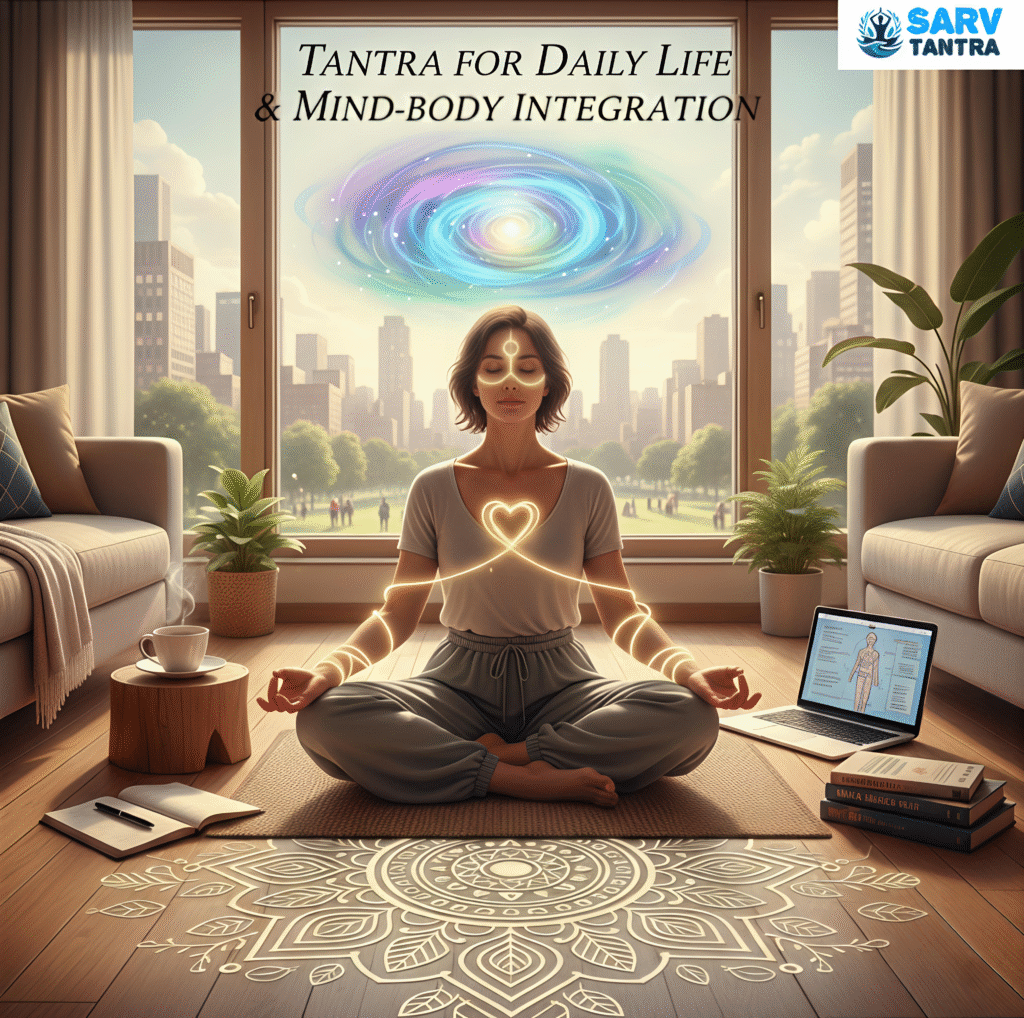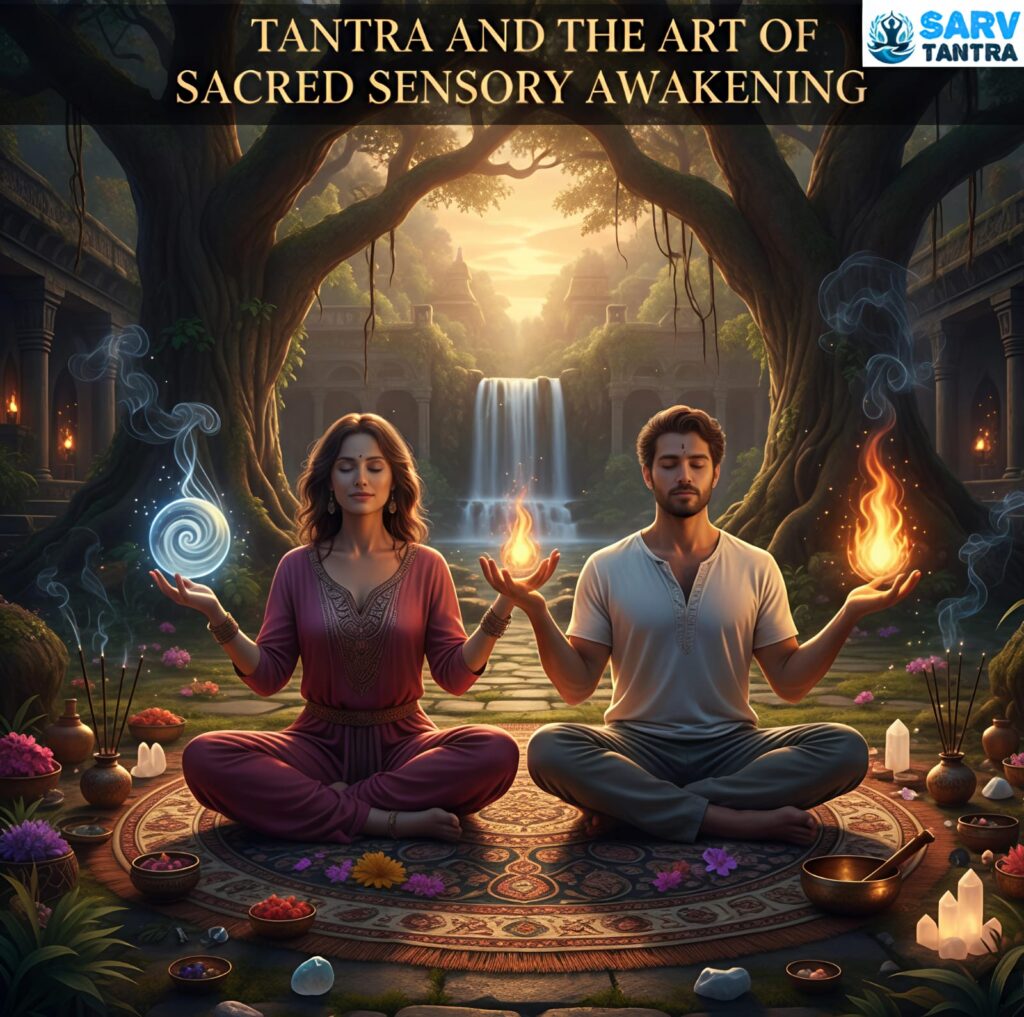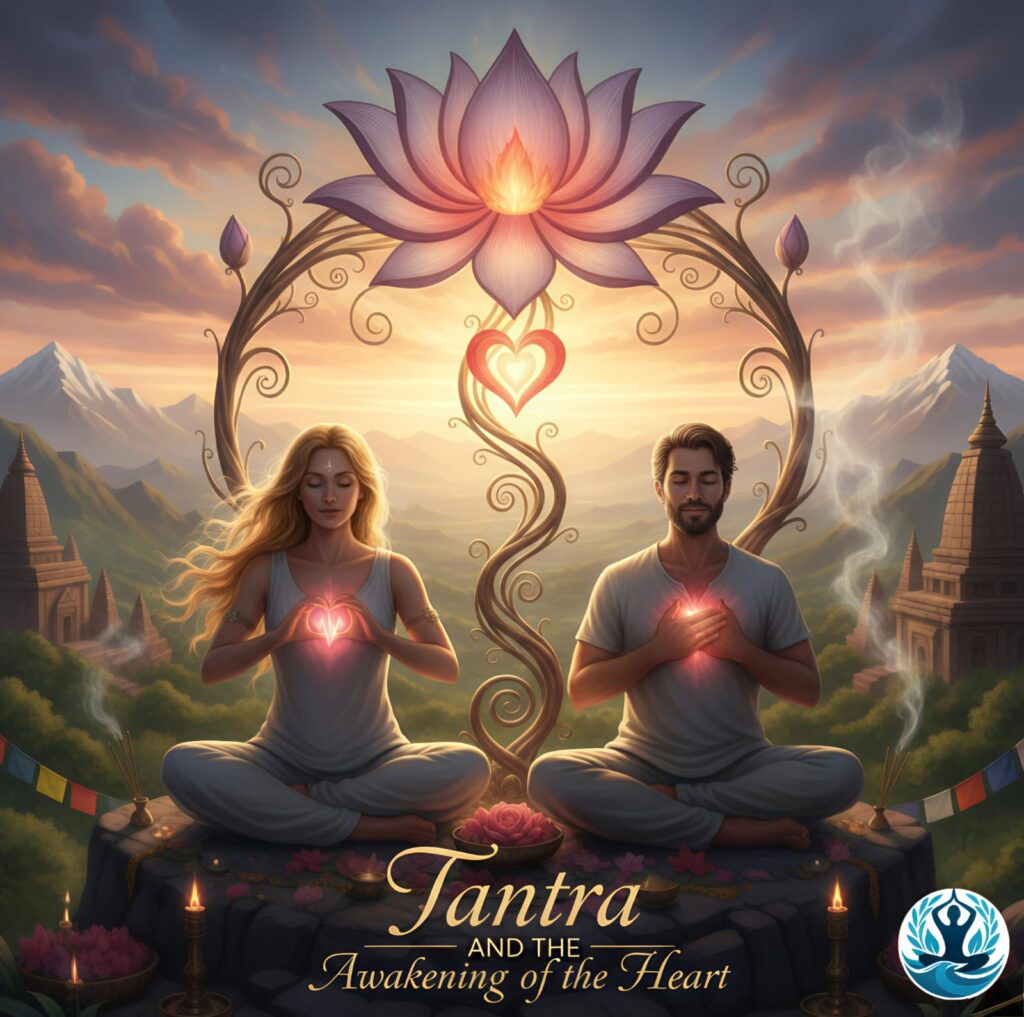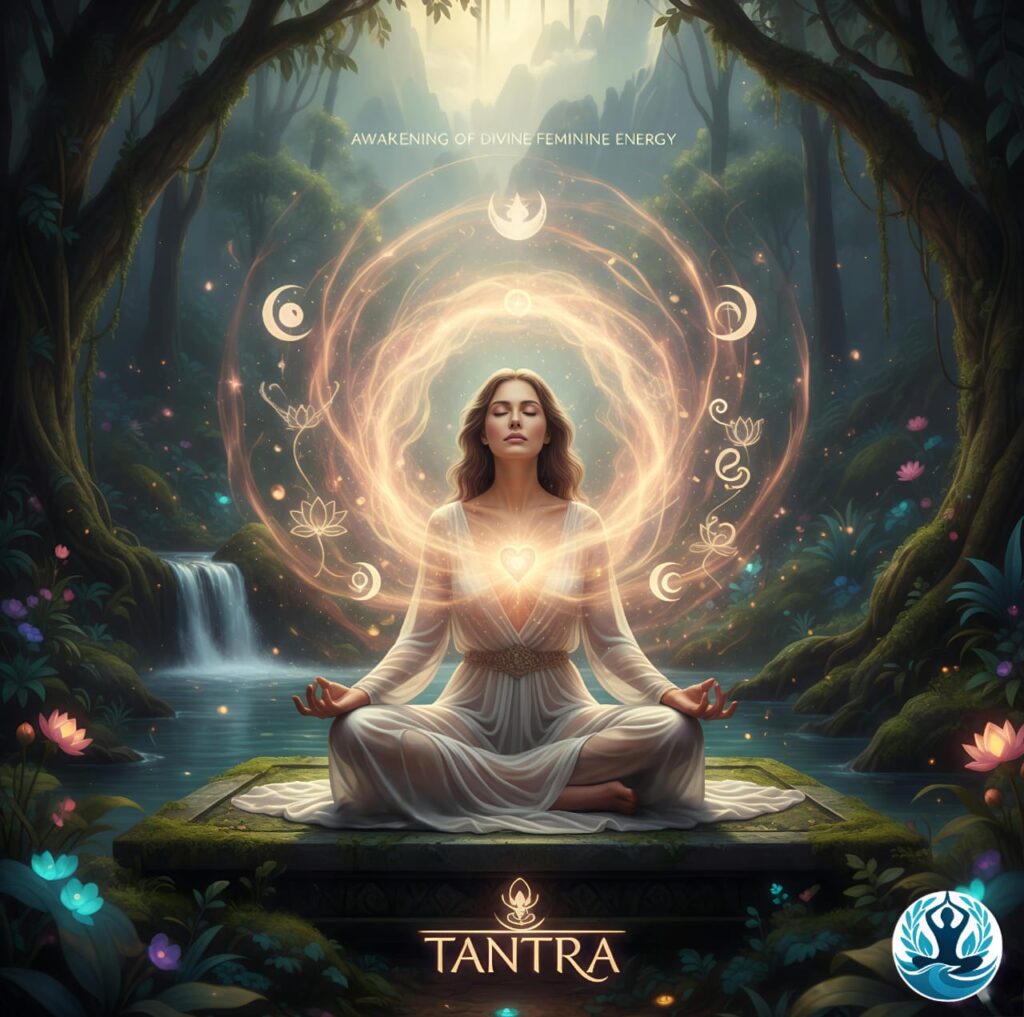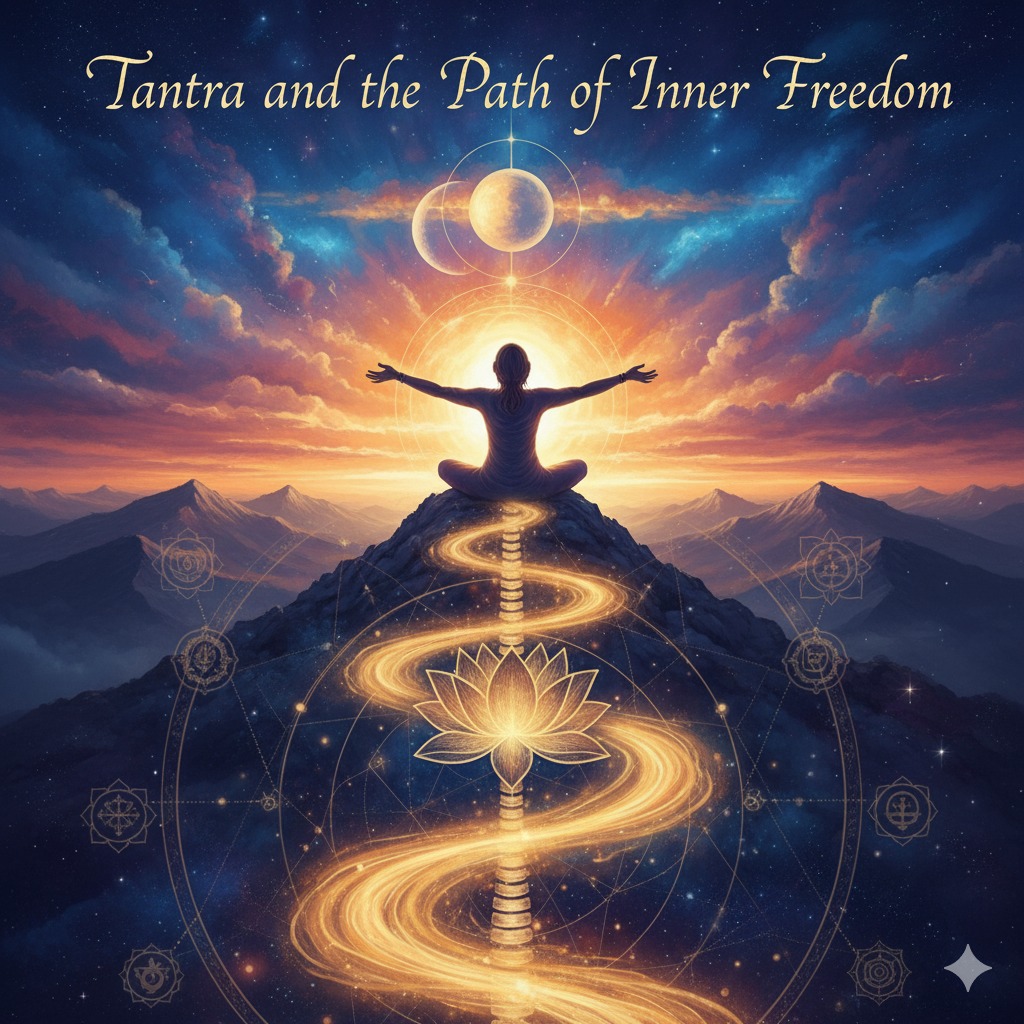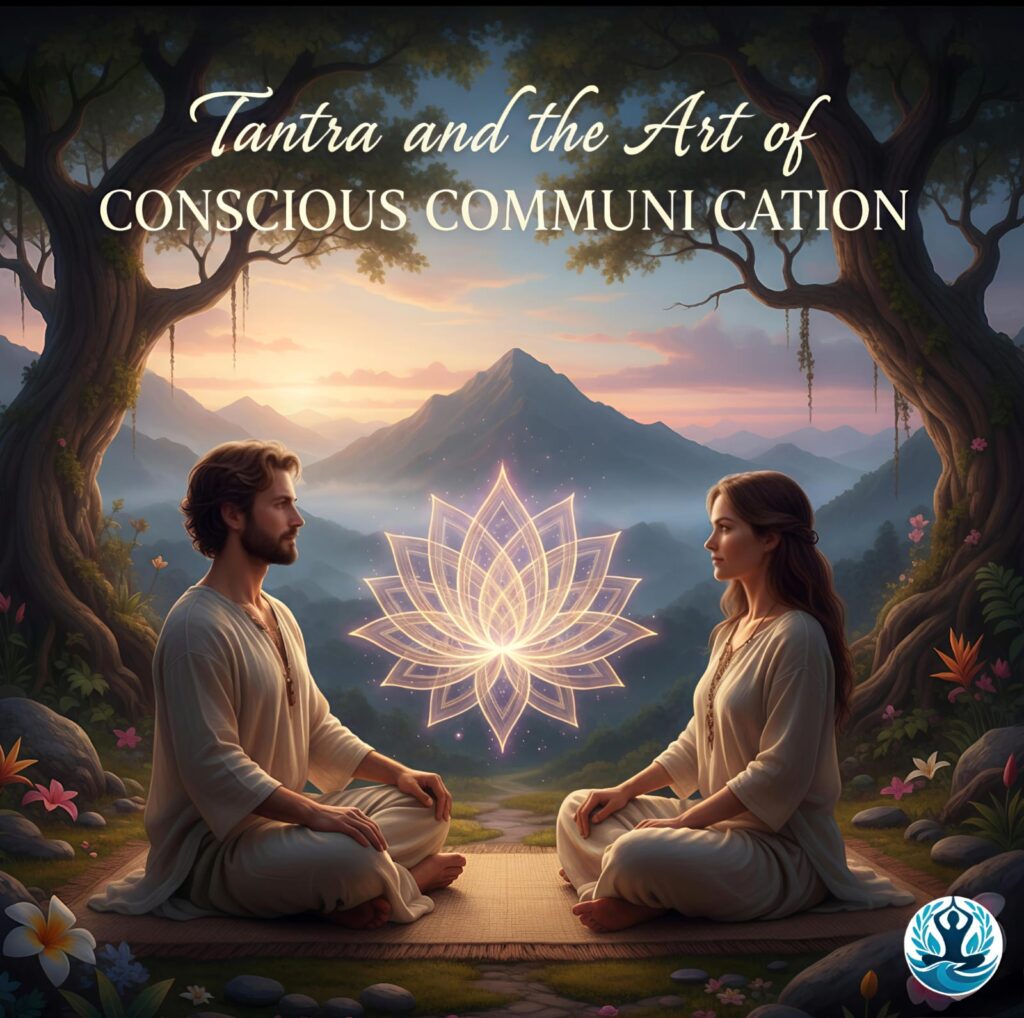Tantra and the Journey from Darkness to Light
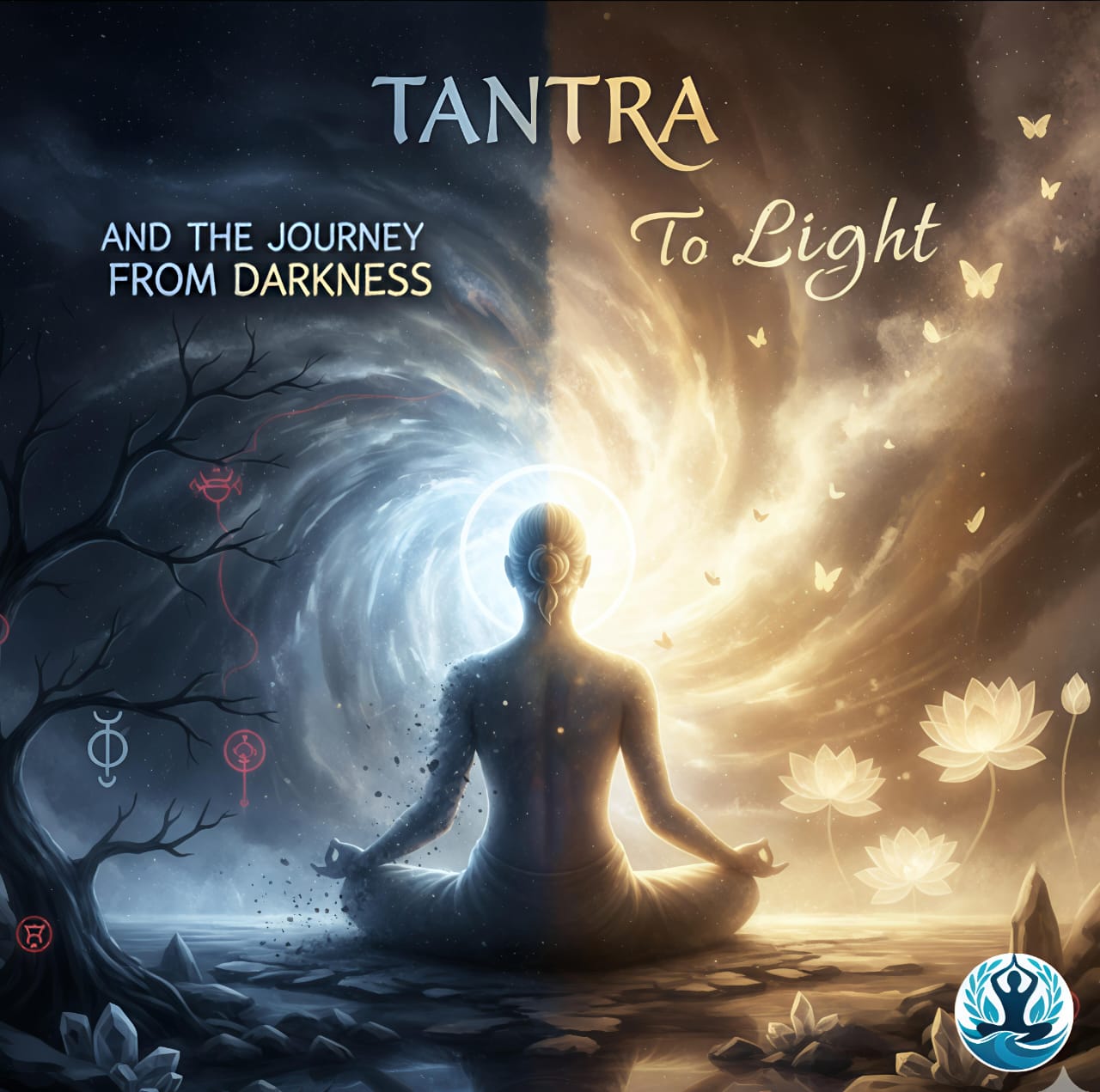
Introduction
Human life is often described as a journey—a passage through experiences, lessons, struggles, and triumphs. Among the many spiritual traditions of the world, tantra stands out for its profound and holistic understanding of this journey. Tantra does not divide life into sacred and profane, pure and impure, spiritual and worldly. Instead, it embraces all aspects of existence as sacred and meaningful. One of its most motivational and transformative teachings is the movement from darkness to light.
In the tantric view, darkness is not simply a symbol of ignorance or suffering. It is the fertile ground of transformation, the hidden space where seeds take root, the silence before creation. Light, on the other hand, represents awakening, clarity, and the realization of one’s divine nature. Unlike dualistic philosophies that encourage escaping darkness, tantra teaches that one must enter, embrace, and transform it. Darkness is not the enemy; it is the doorway. Light is not something external to be sought but an inner reality to be revealed.
This journey from darkness to light is both deeply personal and universally relevant. It motivates seekers to face challenges with courage, to embrace their shadows, and to rise into greater awareness. It offers inspiration not only for spiritual growth but also for practical life, relationships, creativity, and resilience. The tantric perspective gives strength to those who feel lost in confusion or pain, reminding them that within every darkness lies the potential for light.
The Symbolism of Darkness and Light
Throughout history, many cultures have used the symbols of darkness and light. In tantra, however, these are not opposites locked in eternal conflict but complementary aspects of existence. Darkness represents the unmanifest, the unknown, the unconscious layers of the mind, and the hidden powers of energy. Light represents manifestation, awareness, knowledge, and awakening.
Imagine the seed buried in the soil. It rests in darkness, unseen, but within it lies the potential to sprout into the light of the sun. The same is true of human consciousness. Our unconscious fears, desires, and unawakened energies dwell in inner darkness, waiting to be awakened. Without the soil, the seed cannot grow; without darkness, light has no meaning. Tantra motivates us to honor both—to not fear darkness but to use it as a foundation for transformation.
Embracing the Shadow Self
Many people resist their own shadow—the aspects of personality they dislike or fear. These can be anger, jealousy, pain, insecurity, or suppressed desires. Society often teaches us to hide these parts of ourselves. But tantra views the shadow as an integral part of wholeness. To deny it is to deny a part of one’s being.
Tantric practice encourages embracing the shadow with awareness. When anger arises, one does not repress it but observes it, feels it, and transforms it into energy for clarity or action. When fear appears, one does not run but faces it, discovering hidden courage. When pain surfaces, one holds it with compassion until it reveals wisdom. This process is highly motivational, because it teaches that even our darkest emotions carry seeds of strength.
To embrace the shadow is to discover inner freedom. No longer do we live in fear of our own emotions. Instead, we learn to transform them into light. This courage inspires others as well, proving that nothing within us is wasted. Every part of us can become sacred when approached with awareness.
Awakening Through Challenges
Life inevitably brings difficulties—loss, illness, rejection, uncertainty, or failure. Many see these as signs of punishment or bad luck. Tantra, however, views challenges as catalysts for awakening. Just as fire purifies gold, challenges purify the soul, burning away illusions and revealing strength.
For example, when a person faces heartbreak, tantra teaches that this pain can awaken compassion, empathy, and deeper love. When one experiences failure, it can lead to humility, resilience, and new wisdom. The key is awareness. Without awareness, challenges can trap us in despair. With awareness, they become stepping stones to growth.
This teaching is motivational because it reframes suffering. Instead of asking “Why me?”, the tantric practitioner asks, “What can I learn? How can this transform me?” This mindset empowers us to see every darkness as temporary and every trial as an opportunity to grow toward light.
The Power of Awareness
Awareness is the flame that illuminates darkness. In tantra, awareness is cultivated through meditation, mantra, breathwork, rituals, and daily mindfulness. Awareness allows us to observe thoughts and emotions without being enslaved by them.
For instance, when negative thoughts arise, awareness prevents them from becoming destructive habits. Instead, one sees them as clouds passing through the sky of consciousness. Awareness motivates because it gives choice. It teaches that we are not prisoners of our past, fears, or conditioning. Each moment, with awareness, we can choose light over darkness.
Living with awareness makes even ordinary moments sacred. Eating becomes a meditation. Walking becomes a prayer. Relationships become opportunities for conscious connection. This inspires deep motivation to live fully, to treasure each moment, and to awaken inner light in daily life.
Energy as the Source of Light
Tantra emphasizes that the human being is not just flesh and mind but a field of energy. Darkness often represents blocked or misdirected energy—fear, repression, or stagnation. Light symbolizes the free flow of energy, alive and creative.
Practices such as chakra meditation, kundalini awakening, and sacred breathwork help awaken dormant energies. As energy rises, it brings vitality, clarity, and joy. This awakening motivates individuals to live passionately and purposefully. Instead of feeling drained by life, they feel energized by it.
The realization that infinite energy lies within each person is deeply empowering. We are not weak or broken; we are reservoirs of light waiting to be tapped. This truth motivates the seeker to walk the path with confidence.
From Limitation to Liberation
Every human being carries limitations—beliefs like “I am not good enough,” “I cannot change,” or “Life is against me.” These limitations are the inner darkness that keeps us bound. Tantra teaches that these are illusions of the mind. When faced with awareness, they dissolve.
Each time a person transcends a limitation, they experience a taste of liberation. For example, someone who believes they are powerless may discover through practice that they have great inner strength. This liberation becomes motivation to continue the journey. Each barrier crossed inspires the courage to face the next.
The journey from limitation to liberation is not linear but cyclical. Each layer of darkness faced leads to deeper light. This cycle itself becomes a source of motivation, showing that growth is always possible.
The Role of Devotion and Surrender
Tantra values both effort and surrender. Devotion—whether to a deity, to the divine within, or to life itself—brings humility and inspiration. Surrender does not mean weakness but trust. It is the recognition that a greater intelligence guides existence.
When challenges feel overwhelming, devotion gives strength. When the mind feels restless, surrender brings peace. This connection with the divine motivates because it replaces loneliness with trust. The practitioner feels supported, guided, and loved.
Devotion transforms the heart into a source of light. It inspires gratitude, compassion, and service, motivating us to live not only for ourselves but for the good of others.
Daily Life as the Path
A unique strength of tantra is its insistence that the journey from darkness to light happens not in isolation but in daily life. Every action—eating, working, speaking, loving—can become a practice of awareness.
Mindful eating brings health and gratitude. Conscious speech transforms relationships. Working with awareness creates creativity and joy. Relating with presence deepens intimacy. These practices motivate because they show that transformation is not distant. It is here, in the present moment, in every choice we make.
Tantra inspires us to see life itself as a sacred temple. Each day becomes a chance to bring light into the world through our actions, words, and presence.
Inspiring Others with Light
Transformation does not stop with the individual. When someone awakens their light, they naturally inspire others. A person who has faced inner darkness and emerged stronger radiates hope. Their presence motivates others to believe in their own potential.
For example, someone who overcame fear may inspire friends to face their own fears. A person who found peace after pain may guide others toward healing. In this way, tantra creates a ripple effect. By shining our light, we help others discover theirs.
This teaching is deeply motivational, reminding us that our personal journey can uplift the collective. Each step we take toward light brightens the world.
Conclusion
Tantra and the journey from darkness to light offer timeless wisdom for motivation and transformation. Darkness is not to be feared but embraced, for within it lies the seed of growth. Light is not an external prize but an inner awakening. Through awareness, energy, devotion, and daily practice, every human being can move from confusion to clarity, from fear to courage, from limitation to liberation.
This path is motivational because it shows that no darkness is permanent, no challenge is final, and no individual is powerless. Each of us carries within the potential to shine. Tantra reminds us that the divine light is our true nature, and our journey is simply to uncover it.
By walking this path, we not only transform ourselves but also inspire others, creating a world where darkness is no longer feared but understood, honored, and transformed into the brilliance of awakened living.




